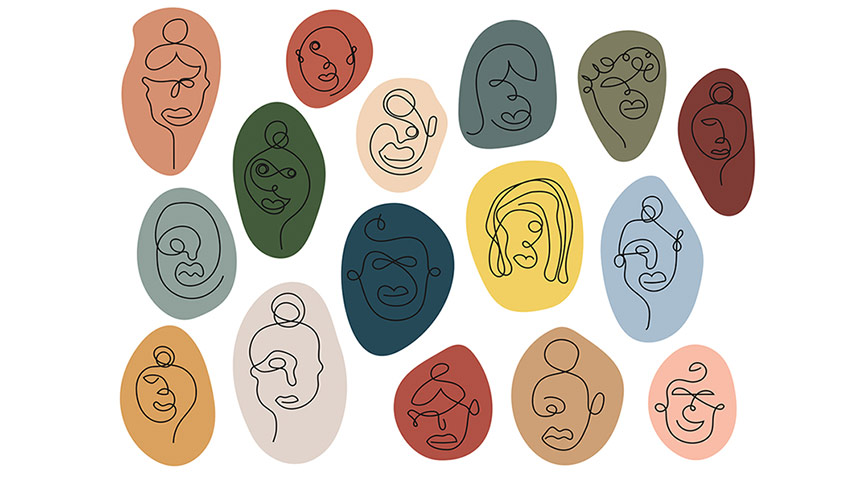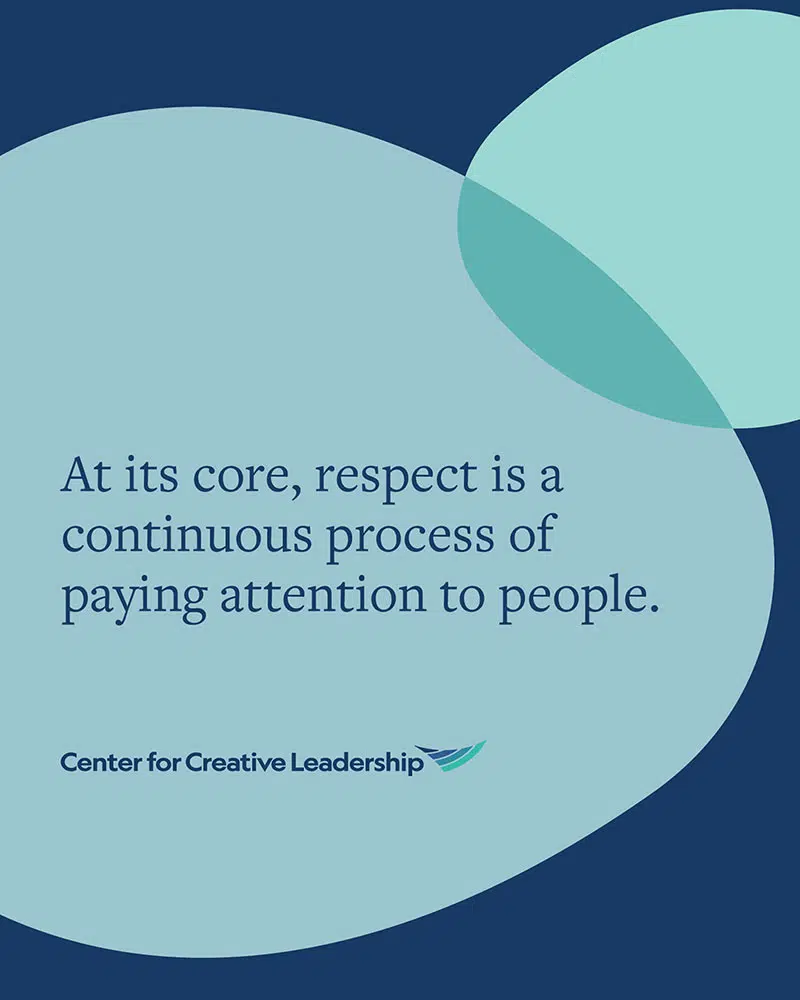What Does It Mean to Have a Culture of Respect at Your Organization?
A little respect goes a long way.
In fact, when it comes to addressing conflict or tensions, our researchers have found that treating people with respect on a daily basis is one of the most helpful things an individual leader can do. And organizations must intentionally build a culture of respect if they want to attract, retain, and leverage the contributions of all their talent.
“Yet at work and in our communities, we are often faced with uncertainty or tension around our differences,” says researcher Kelly Hannum, co-author of our casebook on Leading Across Differences.
It can be a challenge for leaders to establish and nurture respectful relationships among many different groups, but effectively collaborating across boundaries is a key leadership skill. It’s important that leaders work to build an organizational culture of respect and create a climate of psychological safety at work.
3 Indicators of Respect
Our research survey of over 3,000 individuals across 10 countries revealed that being respectful is not just helpful when addressing conflicts between groups; it’s also viewed as a critical leadership responsibility.
“Treating people with respect seems obvious, but it may not be as intuitive as you think,” Hannum explains. She notes 3 key factors from the research that indicate what a culture of respect really means to people.
1. Respect is about listening.
People feel respected when they’ve been heard and understood. Being genuinely interested in and open to others strengthens relationships and builds trust. You don’t need to agree with or like the other person’s viewpoint; just listen to it closely.
Taking the time to actively listen to understand someone’s experiences, ideas, and perspectives is respectful — even if you ultimately choose another path.
2. Respect isn’t just the absence of disrespect.
Eliminating active disrespect — such as rude, insulting, or devaluing words or behaviors — doesn’t create respect.
Respect is an action: We show respect; we act respectfully; we speak with respect.
“Leaders need to know that the absence of disrespect doesn’t have the same positive impact in resolving disagreement, conflict, or tension as does the presence of respect,” says Hannum.
3. Respect is shown in many ways.
The perception of respect is influenced by culture and family, peers, and social relationships. Status, power, and role all create the context in which respect is interpreted. Leaders need to take the time to understand how their identities affect they way they lead, and how respect is given and received in cultures and groups other than the ones they think of as “normal.” Cultural intelligence is especially critical when leading a multicultural team.
“You may not need to make huge changes in your behavior to be more effective,” Hannum says. “Just understanding and acknowledging as valid what others expect from you will make a difference.”
How to Cultivate a Culture of Respect in Your Organization
You can help cultivate a culture of respect at your organization in the following ways:
- Exhibit an interest in, and appreciation for, others’ perspectives, knowledge, skills, and abilities. Express recognition and show sincere gratitude for the efforts and contributions of others.
- Openly communicate information about policies and procedures so everyone has access to and is operating with similar information.
- Clarify decision-making processes, and when appropriate, seek input into those processes, erring on the side of inclusive leadership.
- Consider whether you are in a position to serve as an ally on behalf of others. Make sure you understand allyship and focus on advocating with, not just for others — because advocacy should be done in close partnership with those we intend to serve.
- Take concerns seriously; if someone or a group shares that they feel wronged, show sincere empathy as you seek to better understand that perspective and offer a genuine apology.
At its core, creating a culture of respect is a continuous process of paying attention to people. Leaders must avoid making assumptions that, if unchecked, can lead to misunderstandings and ineffective behaviors. Cultivating a culture of respect requires intentional actions from every leader and the organization itself.
Ready to Take the Next Step?
Partner with us to build a strong culture of respect at your organization. We can work with you to create a customized learning journey for your leaders using our research-backed modules. Available leadership topics include Boundary Spanning Leadership, Collaboration & Teamwork, Conflict Resolution, Emotional Intelligence, Listening to Understand, Psychological Safety & Trust, and more.











